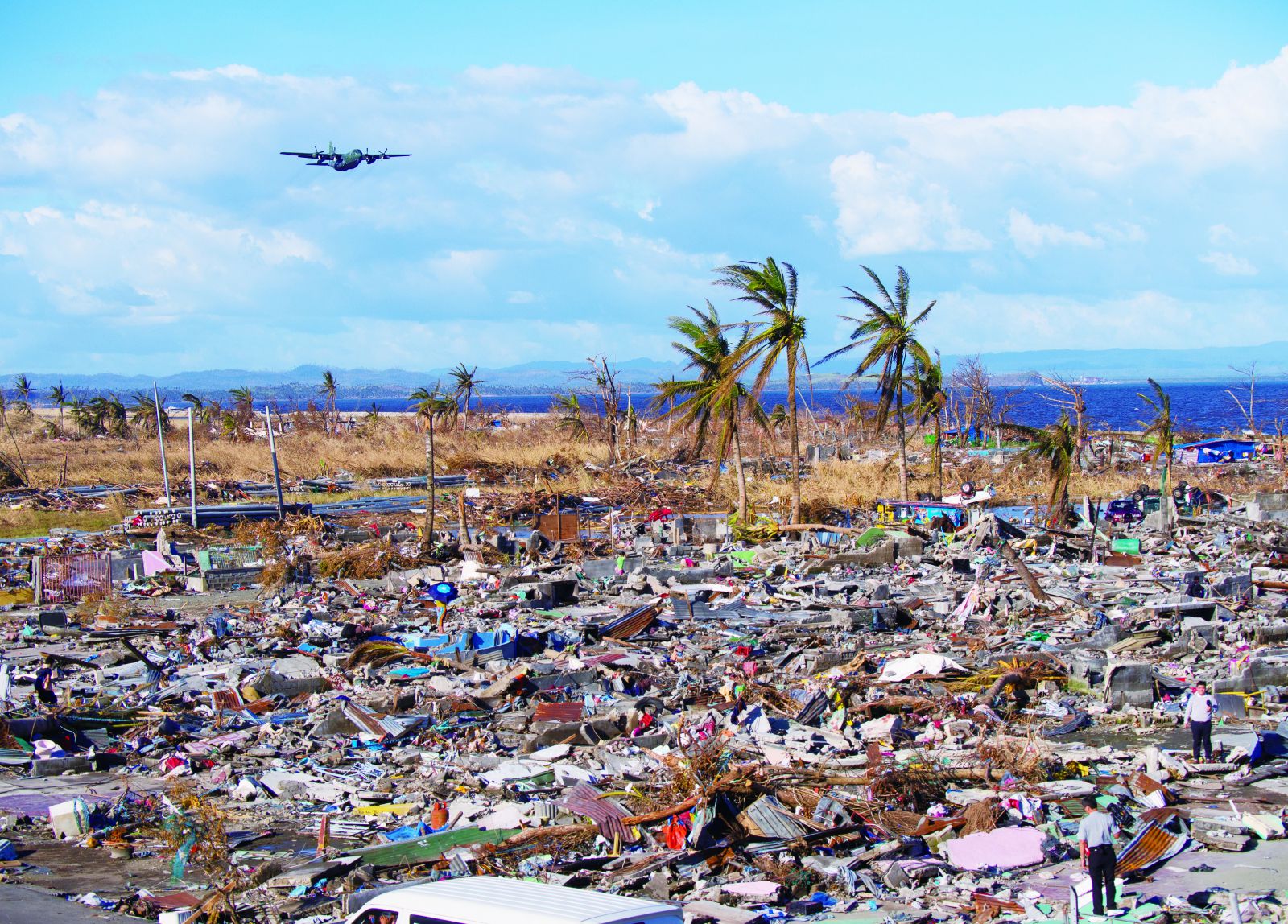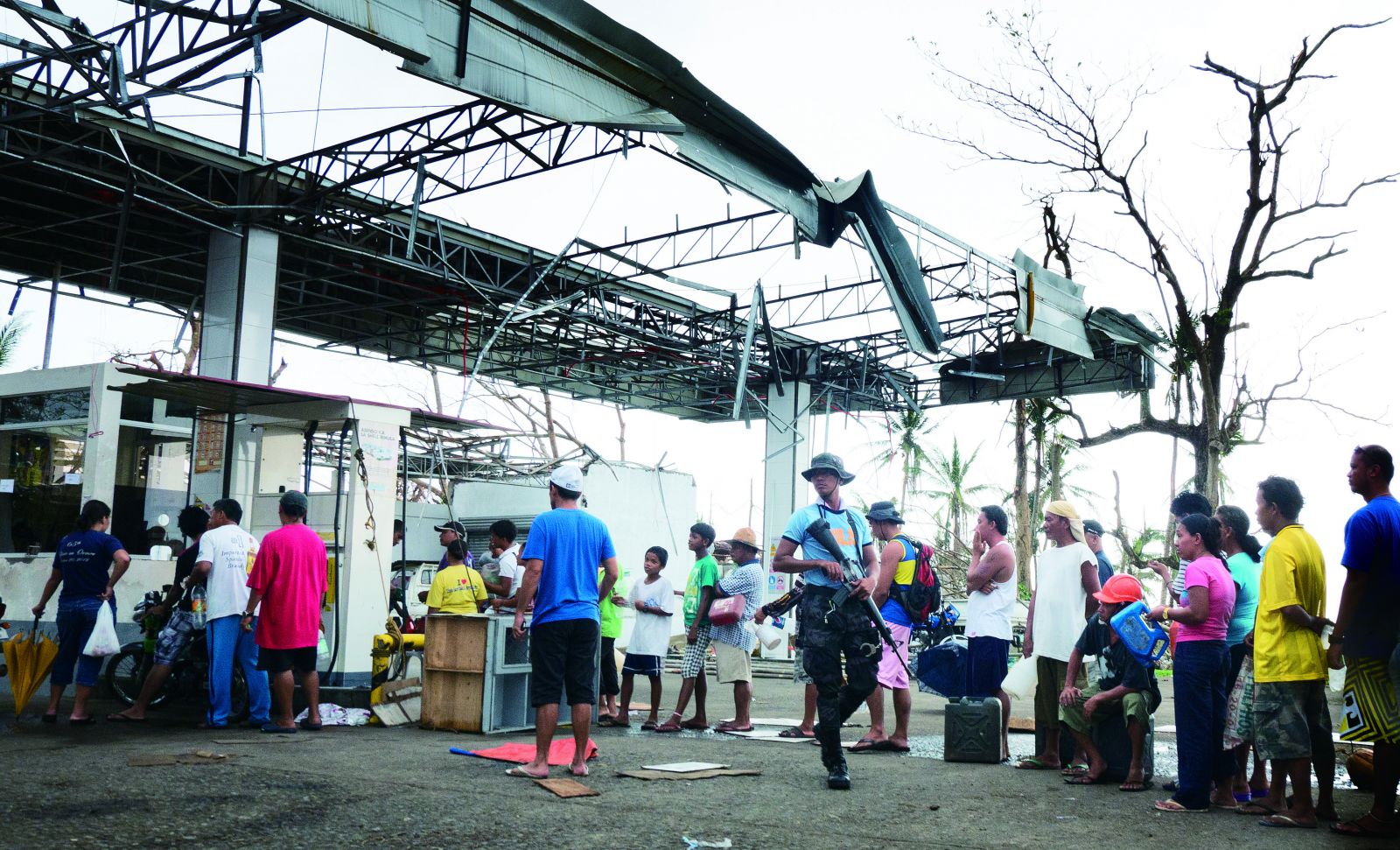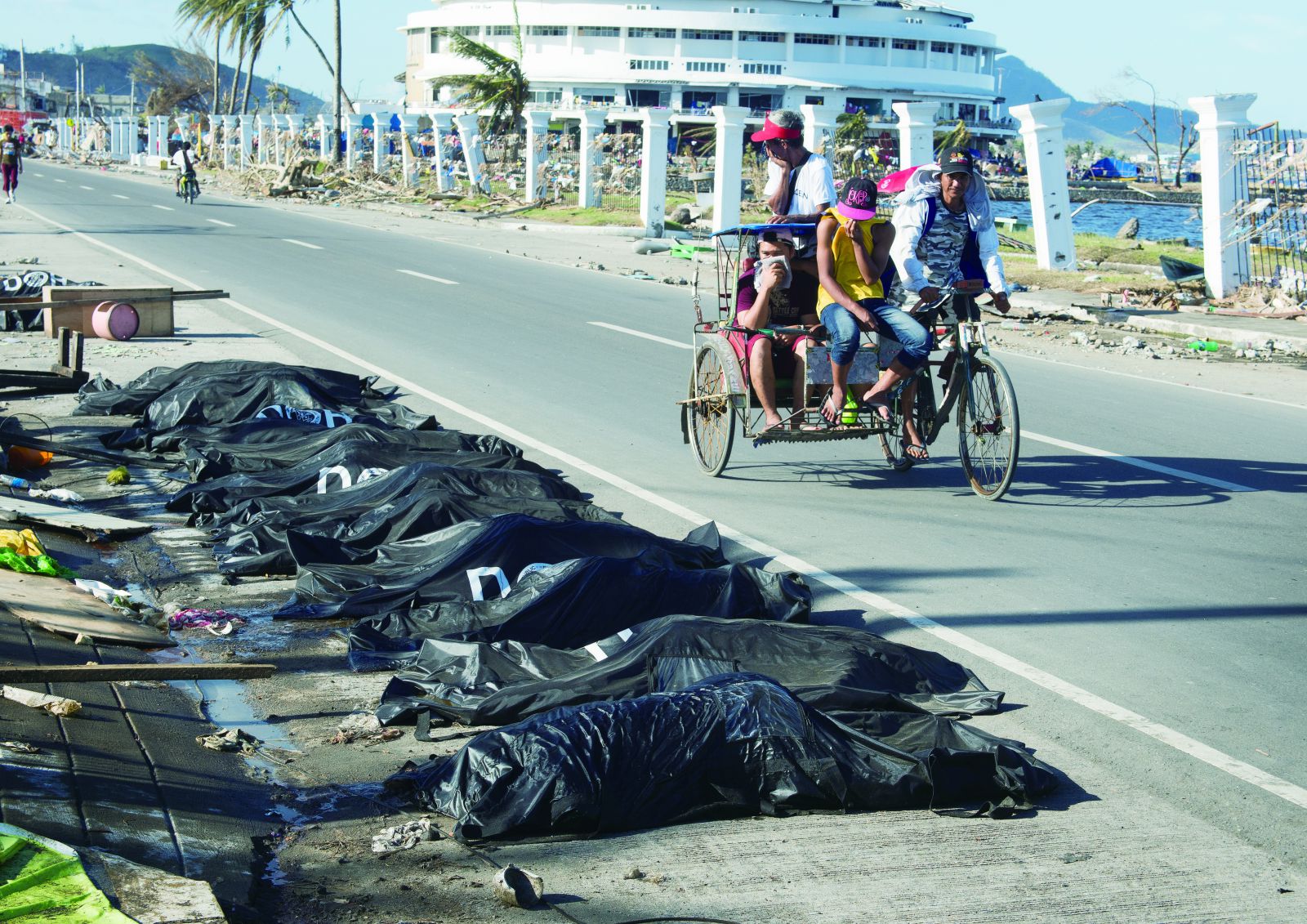

| After Typhoon Haiyan |
| Text and photos by Hsiao Yiu-hwa Translated by Tang Yau-yang |
A cargo plane approaches an airport near this devastated coastal community in Tacloban in the aftermath of Typhoon Haiyan. Approximately 360 miles southeast of Manila, the city is the capital of the province of Leyte, in the central Philippines. Many countries rushed in supplies for struggling victims after the disaster.
Smashing In at 190 MPH Twenty or more typhoons hit the Philippines each year, but this particular storm was one for the record books. Typhoon Haiyan struck with deadly force on November 8, 2013. Delivering winds clocked at more than 190 miles per hour, it was one of the strongest typhoons ever recorded in human history. The monstrous storm inflicted destruction and death on the central part of the nation. The strong winds brought by the typhoon tore the province of Leyte to pieces. Just a week after Haiyan came and left, this family in Isabel, in the city of Ormoc, Leyte, returned to where their home once stood. They salvaged still usable building materials from the debris and began to put up the frame of their house, a first step in piecing their lives back together. On the way from Ormoc to Tacloban, the endless clear sky and the still, mirror-like surface of the sea in the distance gave an image of calm and normalcy. But on the ground, downed homes, torn roads, strewn debris, bowed coconut trees, and banana plants snapped off at waist level pervaded the landscape. Farmers scrambled to harvest rice in a desperate drive to salvage their crops from total ruin. Tacloban and Ormoc in the province of Leyte and Guiuan in the province of Samar suffered the most severe damage. According to the most recent data available at the time of publication, Typhoon Haiyan killed more than 5,000 people, affected 9.5 million, and damaged 19,500 buildings—13,000 of which were totally destroyed.
Reorienting the Disoriented At 1:00 p.m. on November 12, 2013, two C-130H transport aircraft took off from an Air Force base in Hsinchu, Taiwan, and headed directly for Cebu Province in the Philippines. The cargo aircraft were part of a larger Taiwanese military effort to deliver relief supplies donated by charitable organizations in Taiwan, including the Tzu Chi Foundation, for distribution to survivors of Typhoon Haiyan. Tzu Chi donated instant rice and blankets made from recycled PET bottles. The relief goods would be further transported to the disaster area. On November 13, 50 Tzu Chi volunteers from the Philippines and Malaysia boarded a boat at Cebu that took them to Ormoc. They were headed for the disaster area to assess the damage, distribute aid, and provide free medical services. Utility poles knocked askew or fallen on the road made this undivided thoroughfare (in the picture) in Ormoc that much more crowded and hazardous to negotiate. Like the poles, people’s lives were knocked off balance. Utility workers will straighten the leaning poles in the weeks and months ahead, just as the Philippine government and charities like Tzu Chi will help victims get back on their feet again. Relief goods from different parts of the world reached the Philippines soon after the disaster, but getting the goods to victims was a slow process. The disaster zone was too vast, and most municipal workers, being typhoon victims themselves, couldn’t report to work and thus couldn’t help with the aid efforts. Collapsed walls, roofs, debris and garbage blocked the victims’ paths back to normalcy. Heavy earth-moving equipment was in short supply to help remove bulky obstacles. People were dispirited. “I saw no hope in their eyes,” said Tzu Chi Philippines CEO Alfredo Li (李偉嵩) of the victims he had encountered. He announced that the Tzu Chi work relief program would commence on November 20. The program would give victims an opportunity to work on community cleanups or aid distributions in exchange for cash. “When they have work to do, when they start moving about, then they will be on their way to standing up on their own again,” Li said.
Live in Peace, Rest in Peace Typhoon Haiyan damaged 95 percent of Ormoc to one degree or another. The whole city lost electricity. People waited in a long line for precious gas at this service station that had lost much of its roof. Looting, though sporadic, had added to the tense, chaotic atmosphere, prompting police to patrol neighborhoods with weapons at the ready. Two hours by car to the east of Ormoc lies Tacloban, the capital of Leyte. It was a prosperous port city of 220,000 people before Haiyan hit. The storm surge brought waves as tall as six meters (20 feet), dumping water into the funnel-shaped bay, engulfing everything in their path. Everything was in ruins when the water finally receded. Homes were washed out and people were killed by the thousands. Perhaps unidentified, or perhaps because the city simply did not have the manpower to handle them, some bagged corpses were still lying in the open a week after the storm. Exposed in the sun for days, they exuded repulsive odors. The smell was only part of the problem; unprocessed dead bodies could become a huge public health hazard. For now, people just hurried by, trying to lessen the stink by covering up their noses.
Impromptu Surgery Amid an Exodus Jay-Ar Menses, 16, was blown into the water by the incredible winds of the typhoon. Though he survived the disaster, his grandfather and his mother were not quite so fortunate: He died on November 8, the day of the storm, and she remains missing to this day. The disaster left Jay-Ar badly injured. The wound on his left forearm was not properly treated, and that led to necrosis and persistent high fevers. His sister was taking him from Ormoc to Cebu on a ferry when they came across Tzu Chi volunteers on the boat. Among the volunteers was Dr. Robert Sy (盧尾丁), a member of the Tzu Chi International Medical Association. Dr. Sy examined Jay-Ar, scraped off the dead tissue, cleaned the wound, and sewed it up. Jay-Ar’s sister was relieved that he had gotten treatment. Most passengers on the ferry were typhoon victims evacuating the disaster areas. They were understandably melancholy as they left their homes behind.
The Tzu Chi delegation saw much suffering in the disaster area. To help ease that suffering, large-scale distributions of daily necessities and cash, as well as free medical clinics, were kicked off on November 22. Eighty easy-to-assemble classrooms were scheduled to reach Cebu by the end of November. Tzu Chi volunteers will accompany victims through the reconstruction of their shattered lives.
|














|







.jpg)